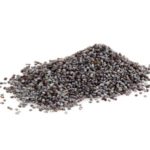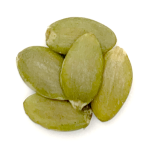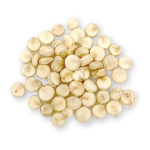
Sesame Seeds
Sesame seeds are widely cultivated in various regions, particularly in the Far East where they are a popular oil seed with millions of tons grown and consumed domestically. However, despite this abundance, China and Korea rely on imports of sesame from Africa, India, and Myanmar.
In Africa, natural sesame is primarily grown for oil crushing, although there is a gradual shift towards introducing hulling processes.
India, on the other hand, competitively produces both hulled and natural sesame for export.
Significant amounts of sesame are also produced in Central America, particularly in Mexico and Guatemala. This sesame is mostly hulled and used in the production of burger buns that require seeds with less sugar to caramelize during baking.
Natural sesame is sold with the protective skin still around the seed.
Hulled is much whiter in colour with the skin removed. This is done by soaking the seed and brushing mechanically, or soaking the seed and agitating in a mild caustic soda solution.
There are multiple varieties of sesame grown, with special properties/characteristics:
Red – has a ‘double skin’ and unpleasant taste. Produced only for oil crushing.
Natural whitish – The ‘standard’ variety grown in India, and most appropriate for hulling then baking.
Black – Sold as natural black. Premium product. Found on the outside of sushis!
ORGANIC
- Origin: India
NON-ORGANIC
- Origin: India
Alex Poole
Associate Director
Senior Trader
FLEXIBLE RESOURCING
Through our relationship with farmers, we can contract grow certain products & process to meet specification. MOQ applies.
Making a Difference
Supporting projects that facilitate opportunity and growth, enriching the lives of the farmers.
Trusted Supply Network
Relationships and strong industry connections, working directly with the farms at source.

















